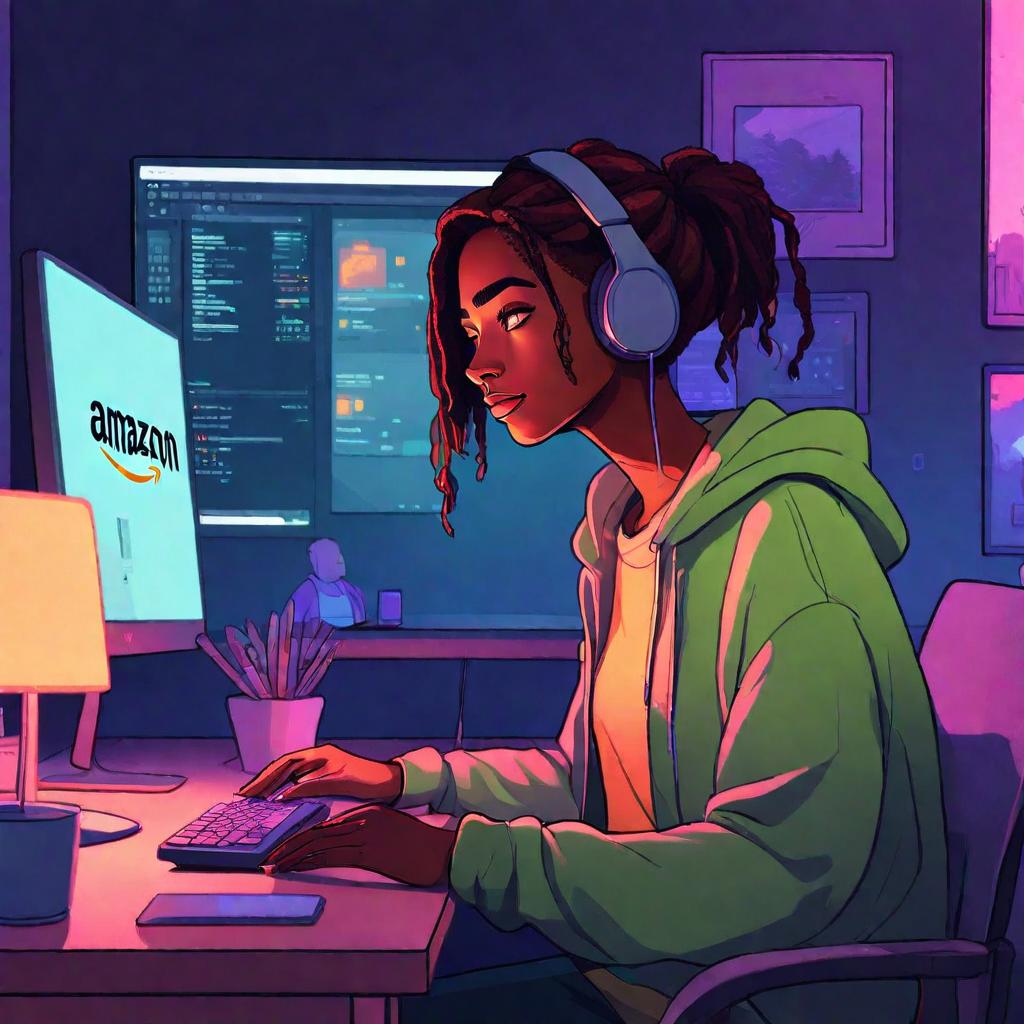1. Understanding Amazon Print on Demand

1.1. What is Amazon Print on Demand?
Amazon Print on Demand is a service that lets creative folks like us design and sell custom products without worrying about inventory or shipping. It’s pretty neat! You create the design, and Amazon takes care of printing and sending it to customers when they order.
1.2. Benefits of using Amazon’s platform
There are quite a few perks to using Amazon for print on demand:
* You don’t need to buy inventory upfront
* Amazon handles all the printing and shipping
* You get access to Amazon’s huge customer base
* It’s easy to get started, even if you’re new to selling online
1.3. Comparison with other print-on-demand services
While there are other print-on-demand services out there, Amazon has some unique advantages:
* Larger customer base than most other platforms
* Generally lower fees compared to some competitors
* Integration with Amazon’s trusted brand and shipping network
However, other services might offer more product types or have less strict content policies. It’s worth checking out a few options to see what fits you best.
2. Setting Up Your Amazon Print on Demand Account

2.1. Creating a Seller Central account
Getting started with Amazon Print on Demand is pretty straightforward. Here’s what you need to do:
1. Go to the Amazon Seller Central website
2. Click on the “Register Now” button
3. Follow the prompts to enter your personal and business information
4. Verify your identity and wait for approval
It might take a few days for Amazon to review your application, so be patient!
2.2. Navigating the Merch by Amazon dashboard
Once you’re approved, you’ll have access to the Merch by Amazon dashboard. This is where the magic happens! Here’s what you’ll find:
* A section to upload new designs
* Tools to create product listings
* Reports on your sales and earnings
* Resources to help you succeed on the platform
Take some time to explore and get familiar with the layout. It might seem a bit overwhelming at first, but you’ll get the hang of it quickly.
2.3. Understanding Amazon’s terms and conditions
I know, I know – reading terms and conditions isn’t exactly fun. But it’s super important to understand Amazon’s rules to avoid any issues down the line. Some key points to remember:
* You must own or have permission to use all the content in your designs
* Amazon has strict policies on offensive or copyrighted material
* There are limits on how many designs you can upload based on your account tier
It’s a good idea to bookmark the terms and conditions page and refer back to it if you’re ever unsure about something.
3. Designing Winning Products

3.1. Researching popular trends and niches
Creating designs that people want to buy is key to success. Here’s how you can find popular trends:
* Check out Amazon’s Best Sellers list for inspiration
* Use tools like Google Trends to see what people are searching for
* Keep an eye on social media for emerging trends
* Consider seasonal themes and upcoming holidays
Remember, while it’s good to follow trends, try to put your own unique spin on things to stand out from the crowd.
3.2. Creating eye-catching designs
You don’t need to be a professional designer to create great products. Here are some tips:
* Keep it simple – often, less is more
* Use high-quality images and fonts
* Make sure your design is clear and readable, even in small sizes
* Consider using free design tools like Canva if you’re just starting out
Don’t be afraid to ask friends or family for feedback on your designs. Sometimes a fresh pair of eyes can spot things you might have missed.
3.3. Optimizing product mockups
Product mockups show customers how your design will look on the actual product. To make them look great:
* Use Amazon’s provided templates to ensure your design fits correctly
* Try out different colors to see what works best
* Make sure the mockup accurately represents how the final product will look
Remember, the mockup is often the first thing a customer sees, so it’s worth taking the time to get it right.
4. Listing and Pricing Strategies

4.1. Crafting compelling product titles
Your product title is super important – it’s what helps customers find your product. Here’s how to write a good one:
* Include key information like the product type, design theme, and any special features
* Use words that customers are likely to search for
* Keep it under 80 characters if possible
For example, instead of just “Funny T-Shirt”, try something like “Funny Cat Lover T-Shirt – Soft Cotton Tee for Men and Women”.
4.2. Writing effective product descriptions
Your product description is your chance to tell customers why they should buy your product. Here are some tips:
* Describe the design and what makes it special
* Mention the quality of the product (e.g., “soft, durable fabric”)
* Include any sizing or care instructions
* Use bullet points to make it easy to read
Remember to be honest in your descriptions. It’s better to have a satisfied customer than a return!
4.3. Determining competitive pricing
Pricing can be tricky, but here’s a simple approach:
* Check out similar products to see what they’re charging
* Consider your costs (Amazon’s fees, etc.) and desired profit margin
* Start in the middle range and adjust based on sales
Don’t be afraid to experiment with pricing. You can always change it later if it’s not working out.
5. Marketing Your Print on Demand Products

5.1. Leveraging Amazon’s internal promotional tools
Amazon offers some handy tools to help promote your products:
* Use relevant keywords in your listings to improve search visibility
* Take advantage of Amazon’s advertising options, like Sponsored Products
* If eligible, enroll in programs like Amazon Prime for added exposure
These tools can help get your products in front of more potential customers.
5.2. Utilizing social media for product promotion
Social media can be a great way to showcase your designs:
* Share your products on platforms like Instagram, Pinterest, or Facebook
* Use relevant hashtags to reach people interested in your niche
* Engage with your followers and build a community around your brand
Remember, social media is about being social. Don’t just post links to your products – share the story behind your designs or ask for feedback from your followers.
5.3. Exploring external marketing channels
There are lots of other ways to get the word out about your products:
* Start a blog or YouTube channel related to your niche
* Collaborate with influencers or other creators in your space
* Consider email marketing to keep in touch with past customers
The key is to find channels where your target audience hangs out and engage with them there.
6. Managing Inventory and Fulfillment
6.1. Understanding Amazon’s inventory system
One of the great things about print on demand is that you don’t have to manage physical inventory. Amazon handles all of that for you. However, it’s still important to understand how their system works:
* Amazon prints products as orders come in
* There are no storage fees or minimum order quantities
* You can adjust your designs or remove products at any time
This system allows for a lot of flexibility, which is great for testing out new designs.
6.2. Monitoring stock levels and reorders
Even though Amazon handles the printing, it’s a good idea to keep an eye on your “inventory”:
* Regularly check your dashboard for any low stock warnings
* Be aware of any production delays that might affect order fulfillment
* Consider having backup suppliers for popular designs in case of issues
Staying on top of these things can help ensure your customers get their orders on time.
6.3. Handling customer service and returns
While Amazon handles most customer service issues, there are still some things you might need to deal with:
* Respond promptly to any customer questions or concerns
* Be prepared to handle requests for customization or special orders
* Understand Amazon’s return policy and how it affects your business
Good customer service can lead to repeat customers and positive reviews, which are golden for your Amazon business.
7. Analyzing Performance and Scaling Your Business
7.1. Interpreting Amazon sales reports and analytics
Amazon provides a wealth of data to help you understand how your products are performing:
* Regular sales reports show you which products are selling best
* Analytics can help you understand customer behavior and preferences
* Use this data to make informed decisions about your business
Don’t be overwhelmed by all the numbers. Start by focusing on a few key metrics and expand from there.
7.2. Identifying top-performing products
Once you’ve been selling for a while, you’ll start to see patterns:
* Look for products that consistently sell well
* Pay attention to customer reviews and feedback
* Consider creating variations of your most popular designs
Your best-selling products can give you valuable insights into what your customers like.
7.3. Expanding your product line and designs
As you grow, you might want to branch out:
* Try applying your popular designs to different product types
* Explore new niches or themes that complement your existing offerings
* Consider seasonal or trending topics to capture new markets
Remember, it’s often easier to sell more to existing customers than to find new ones, so think about how you can offer more value to your current fan base.
Summary
Starting an Amazon Print on Demand business can be an exciting journey. By understanding the platform, creating great designs, marketing effectively, and staying on top of your business performance, you can build a successful venture. Remember, it’s okay to start small and grow gradually. The most important thing is to keep learning and adapting as you go.
Frequently Asked Questions
1. How much does it cost to start an Amazon Print on Demand business?
It’s free to set up an account, but you might need to invest in design tools or outsource design work.
2. How long does it take to get approved for Merch by Amazon?
Approval times can vary, but it usually takes a few days to a couple of weeks.
3. Can I sell my Amazon Print on Demand products on other platforms?
Yes, but you’ll need to handle production and shipping yourself for sales outside of Amazon.
4. What if my design doesn’t sell well?
Don’t worry! You can always remove or replace underperforming designs without any cost.
5. How often do I get paid for my sales?
Amazon typically pays out earnings monthly, about 30 days after the end of the month in which the sale was made.
